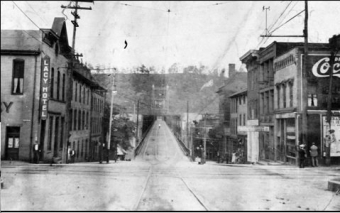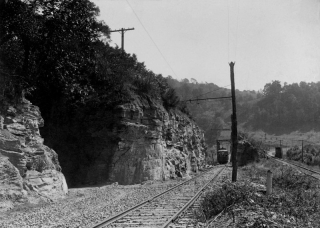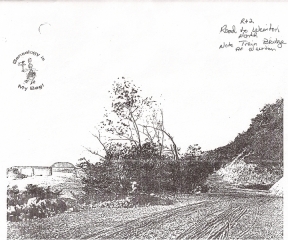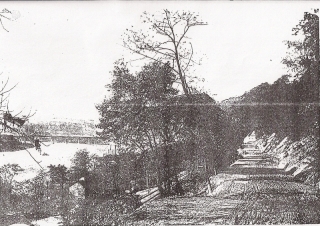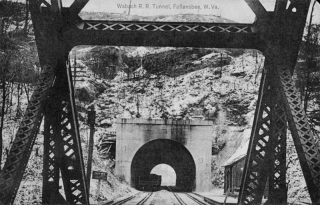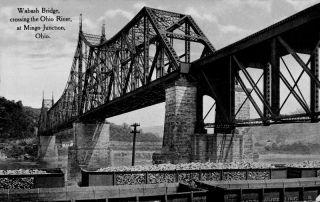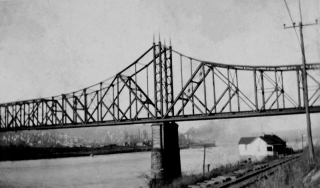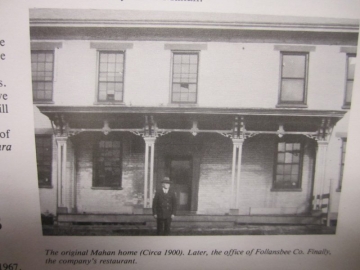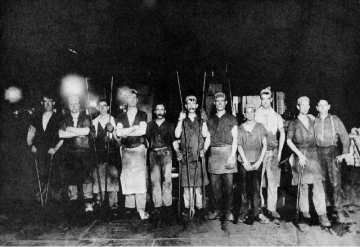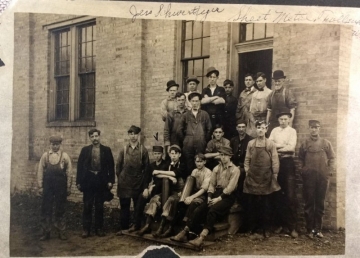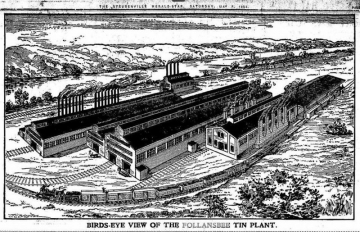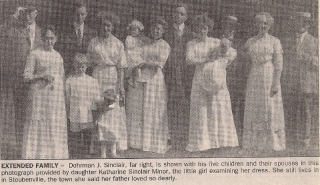East Steubenville is an unincorporated area that lies across the Ohio River from Steubenville, Ohio. Long before the Market Street Bridge existed the area served as an important stop for transportation. For decades the middle ferry, which was located near where the Market Street Bridge is today, carried farming goods across the river to Steubenville marketplaces.
The middle ferry was established by Richard “Gray Beard” Wells in 1799 to fright goods across to the Ohio shore. His relative Bazil Wells owned the land on the Ohio side. Bazil, in conjunction with James Ross, laid the plans for the town of Steubenville. “The rapid growth of Steubenville, with the large emigration to Ohio, made this ferry very profitable.” The ferry remained in the Wells family. In 1836 Nathaniel Wells took charge of the ferry property and hotel. He removed the old stone building, replacing it with a larger brick hotel and outbuildings. Wells continued managing the ferry and prospered in various other businesses including a lumber yard and steam saw mill. He operated various warehouses and farms raising sheep and other stock.
As early as 1878, East Steubenville also served as a stop for the railroad between Holiday Cove and south to Mahan station (Follansbee). Travelers leaving the train used the ferry to Steubenville. With the coming of the Market Street Bridge, a walkway was constructed from the tracks below to the bridge for foot traffic. Later, the trolley line also stopped at the bridge to accommodate travelers. Even later, buses stopped for passengers to and from East Steubenville.
During the early 1900s the area also had a popular swimming beach along the river. There was a small community of residential homes on the hillside along the riverbank. By the 1960s, parts of this little community began to disappear following the creation of modern dams that raised water levels and widened the river.
- H. Newton, G. G. Nichols, & A.G. Sprankel, “History The Panhandle; Historical Collections..” (Wheeling, J.A. Caldwell, 1879), p. 350.

![10922859_654211204688206_5071036689829263812_n[1] 10922859_654211204688206_5071036689829263812_n[1]](http://follansbeetimeline.com/wp-content/gallery/picturegallery/dynamic/10922859_654211204688206_5071036689829263812_n1.jpg-nggid03388-ngg0dyn-320x240x100-00f0w010c010r110f110r010t010.jpg)
